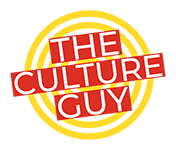Are you a successful entrepreneur who is stuck at the growth barrier?
I often work with founders who have been really successful and grown their organisation to 20+ employees and £1m+ turnover. They have done an amazing job building a great business but that process has stalled.
The struggle to grow the business beyond this barrier is tough and it is real.
When growing a small business from startup to 20 employees, founders can have their hand on everything. They can be involved in all parts of the business and maintain the culture and the values by being present in all the daily decisions.
However, there comes a point when they become the victim of their own success. At some point, the business grows to a size that makes it difficult for the founder to manage every decision daily and be a party to every action across the organisation, without working harder and harder and harder. It becomes an impossible task.
This is where the barrier exists. A founder has a choice: continue to grow the organisation and trust his team to deliver the promise and value of the organisation that has been delivered up to now OR stop growing the business and stay personally involved in all areas of the daily business.
The trouble with continuing to grow is that you have to rely on people to represent the company as the founder would with the same values and promises to the standard expected of the company the founder has worked hard to build. This often fails to happen, leaving the founder having to step in and work harder to maintain the value and standards.
The founder becomes a bottleneck because she is unable to rely on her people to maintain the cultural standards in her absence.
This is the growth barrier.
To break through the growth barrier, to be able to scale up well, founders need to create a culture that makes it easy for people to replicate and deliver the brand values and cultural behaviours even when the founder is not involved. This takes four things:
1. Give your people something to be proud of. The first thing any organisation needs to do is to define their purpose, their raison d’etre, their whole point of existence.
2. Find passionate people to journey with. Without the right people, inspired and released to work in their sweet spot, your organisation is not going to be all it can be.
3. Talk a good story. Make sure what’s being said through marketing, in meetings, over the PR wires, via email, and all those other places reinforce your purpose. Success starts with our thoughts and our thoughts are impacted by all the input we get, so make this consistent.
4. Act the part. Every activity, every policy, every programme, every space should be designed to remind people what’s important. The metrics & rewards; policies and procedures; environment and space, etc. must reinforce your purpose.
If you are a founder stuck at the growth barrier, you need to define your culture and the associated behaviours and then implement a cultural structure to ensure that the culture can be replicated and delivered by everyone in the organisation, all the time, even when the founder is not present. This way the business can grow without the founder having to do all the work and be responsible for all decisions and activities.
The entrepreneur can build as a coherent and trustworthy team and grow as big as her imagination will take her.



